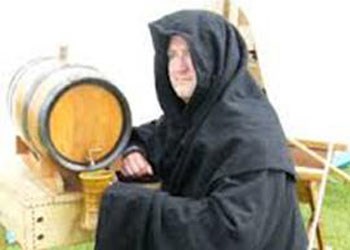Submitted by Kaare Askildt
JUL (CHRISTMAS)
In Norway we celebrate Jul. The name is derived from the Old Norwegian language (still spoken in Iceland) Jol or Jolablot (Jul offering) which has its origin in the January 12th pagan celebration of the mid-winter day in Scandinavia. King Haakon 1 Haraldson (930 - 960) ordered that Christmas must be celebrated on December 25, to coincide with the Christmas celebration throughout central Europe, and sought to stop the pagan offer ritual as part of the political process to introduce Christianity to Norway. Therefore the Christian celebration of the birth of Christ was in Norway allowed to use the old name of Jul.
TRADITIONS AND DIFFERENCES
Most of Europe has given the celebration a Christian name. In English it is called Christmas (Christ Mass), in Germany it is called Weihnachten (Exalted Night), in France it is called Noel (indicating birth), but in Scandinavia the celebration of the birth of Christ has retained the old Germanic name of Jul. The English language (which is indeed a Germanic language) has also retained the archaic Yuletide.
Uniform elements of Christmas celebrations across the world would be lighted candles, family gatherings, traditional meals, exchange of gifts, and colour symbols like red and green, Santa Claus and his helpers, angels, stars and statues of the three wise men visiting upon Mary and Joseph and the infant Jesus, and a variety of traditions that varies from country to country.
In Norway Christmas is celebrated on December 24 with a Christmas Mass in the afternoon. At home a special Christmas supper is waiting for the family upon arrival from the church, candles are lighted and special Christmas music would be playing. A decorated Christmas tree is prominently displayed and gifts are exchanged after supper. Some households might even get a visit by Santa Claus during the evening of Christmas Eve.
SEASONAL CIRCUMSTANCES
Practical reasons such as amassing hay and grain to feed the livestock during the winter, dictated how many animals to overwinter, and the excess would be slaughtered and butchered. It was therefore only natural to have a feast to mark the end of the slaughter. In Norway where the sun slides over the horizon or behind large mountains, it would have been simple to anticipate when the sun would disappear. It is assumed that there would have been a feast and offering to the gods even in the Stone Age. The Germanic word Jul seem to indicate that it is a very old tradition.
In the old Viking age, the mid-winter celebration would last about three days. They had to make offerings to the gods, drink mead and party hardy! It is unclear what the old Vikings were celebrating. It more than likely was to make offerings for next year's crop, to celebrate the life of the dead warriors having made their way to Valhalla, or a light festival by bonfires to offset the dark winter days.
JULEBLOT (JULE OFFERING)
It was the time of the year marked by the contrast between gay festivities and dark horror. While drinking mead and enjoying a good time, they had to also watch out for the dark forces that were believed to roam around. Oksoreia or just Reia was the name of a scary gang of dead people, trolls and other bad and mischievous people that would travel about and scare both people and livestock.
When Christianity was introduced to Norway, the old traditions were included to ease the transition from Nordic gods. Jul was still celebrated, but given new contents and meaning. The old winter offering to the gods were eliminated, given a new date and replaced with the celebration of the birth of Christ. However, the transition spanned over many generations, with offerings to the Nordic gods on the old date and the celebration of Jesus birth on the new date, until offerings to the Nordic gods were forbidden around the year 1000. When in the old days the mead was brewed and offered to the Nordic gods, it was now imposed to be brewed and blessed by a priest in the name of Jesus and the Virgin Mary.
CHRISTIAN EVOLUTION
Other early Christians celebrated mainly the three wise men that followed the star of Bethlehem and delivered gifts to the baby Jesus. The date for the wise men to arrive at the crib was set to January 6th. The birth of Christ was of lesser importance, and got its own liturgy around the year 800.
The birth of the baby Jesus became more important during the middle ages. The forty days before Christmas day became a period of fasting, and the Christmas celebration lasted for another forty days. The Christmas gospel would then become central to the celebration. It became usual to have plays performed that would contain the crib with the baby Jesus, and the arrival of the three wise men, a tradition that has been maintained and is still done in our day and age.
CHRISTMAS IN NORWAY
In Norway, and also in many other countries, many symbolic traditions with Christian contents, and some without any connection to Christianity are being maintained, such as a Christmas tree, an advent calendar, advent candles and the advent star. The tradition of Christmas Mass on December 24 is still observed in Norway.




